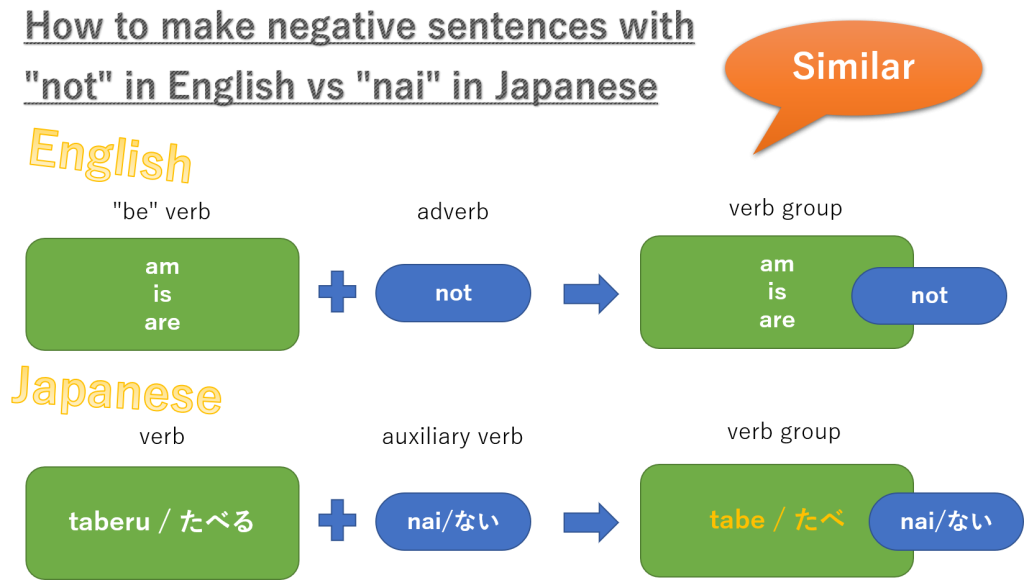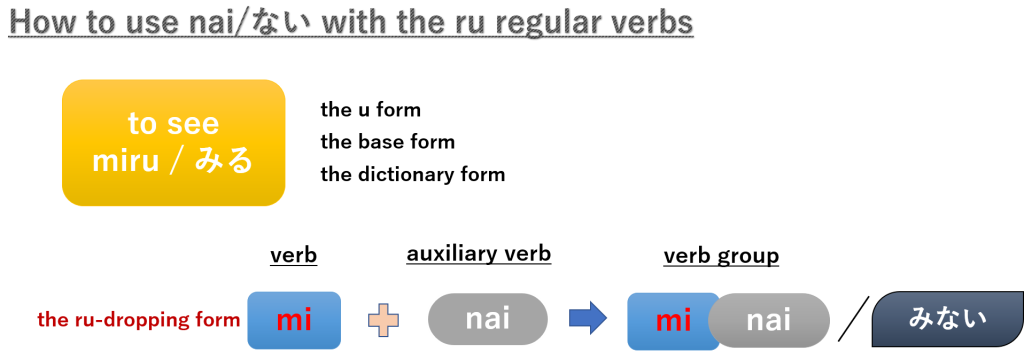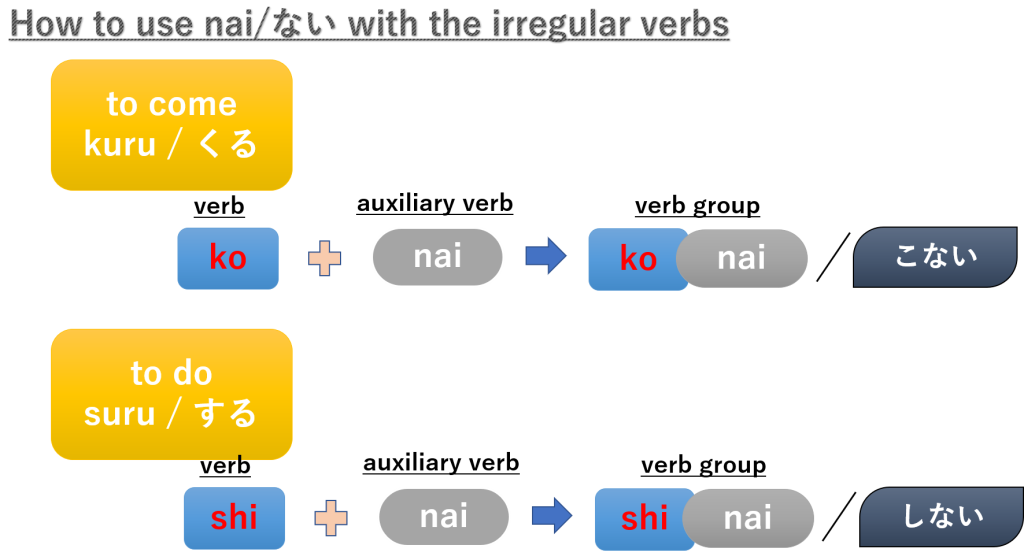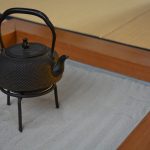
目次
How to make negative sentences in Japanese
In Japanese the auxiliary verb "nai/ない" is used to change the meaning of the sentence from positive to negative in the same way as English uses "not" for it. Both "nai/ない" and "not" have grammatically same function.

The auxiliary verb "nai/ない" comes right after a verb like "not" comes right after the verb "be" in English.
How to use the auxiliary verb "nai/ない" with verbs
Japanese verbs have conjugations. They change their form depending on an auxiliary verb or conjunctive particle that is placed immediately after the verb.
By the way, there are three types of verb in Japanese. They are the u regular verb, the ru regular verb and the irregular verb. So, you need to learn how the auxiliary verb "nai/ない" is used with the three different types of verb.
the u regular verb
The a form of u regular verbs is used with the auxiliary verb "nai/ない."

"nai/ない" follow the a form of the u regular verbs. Here "nai/ない" follow “ura/うら” which is the a form of the verb “uru/うる.”
The ru regular verb
The ru-dropping form of ru regular verbs is used with the auxiliary verb "nai/ない."

The ru regular verbs have the ru-dropping form instead of the i form and the a form of the u regular verbs. Here "nai/ない" follow “mi/み” which is the ru-dropping form of the verb “miru/みる.”

The irregular verb

There are only two irregular verbs in Japanese and they are “kuru/くる” which means to come and “suru/する” which means to do. When "nai/ない" comes after the verb “kuru/くる”, it becomes “ko/こ.” When "nai/ない" comes after the verb “suru/する”, it becomes “shi/し.”
You may also like
https://jpgrammar.com/masuandmasen/









